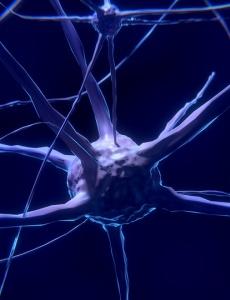
Here are summaries of a selection of the papers published by Duke Neurobiology in Spring 2019:
Movement:
- Huanghe Yang and collaborators found that Subdued, a Drosophila transmembrane protein 16 (TMEM16) ortholog, harbors biophysical features that strikingly resemble those of the mammalian TMEM16F. The findings can provide new insights into understanding the evolution of TMEM16 family and the molecular mechanisms of their ion and phospholipid permeation. Read more: http://www.jbc.org/content/294/12/4529.long
- Miguel Nicolelis and team developed a novel, non-invasive neurorehabilitation protocol for locomotion training for patients with severe chronic paraplegia resulting from spinal cord injuries. The protocol targets both musculoskeletal training and corticospinal plasticity. Read more: https://www.nature.com/articles/s41598-019-43041-9#Sec2
Memory:
- Alex Vaz and Nicolas Brunel discover that just before the brain successfully retrieves a memory, “ripples” in the brain’s medial temporal lobe couple with similar oscillations in the temporal association cortex. Read more: https://science.sciencemag.org/content/363/6430/975.long
Neural Cell Biology:
- The Wang lab and Kaf Dzirasa discovered a group of neuroendocrine cells that actively engage a switch between conscious and unconscious states for anesthesia or sleep. Read more: https://www.sciencedirect.com/science/article/pii/S089662731930296X?via%3Dihub
- Greg Field and collaborators demonstrate novel mechanistic insights into how horizontal cells provide feedback to photoreceptors. Read more: http://dx.plos.org/10.1371/journal.pbio.3000200
Senses:
- Miao-Miao Jin, working with Lindsey Glickfeld and Jeff Beck, shows that mice form perceptions without optimally integrating all of the information available from the visual cortex. Read more: http://www.jneurosci.org/cgi/pmidlookup?view=long&pmid=31015339
- Findings from Hiroaki Matsunami and team demonstrate how loss of function of an individual olfactory receptor (OR) correlates with changes in perceived intensity and pleasantness. Read more: https://www.pnas.org/content/116/19/9475.long
- The Sommer lab explored the psychophysics of making decisions between objects based on probabilistic visual cues in rhesus macaques. They and humans can perform probabilistic discrimination between visual stimuli and can satisfice (make “good enough” decisions) under time pressure, in some cases even using the same strategy. Read more: https://dukespace.lib.duke.edu/dspace/bitstream/handle/10161/17793/ToaderEtAl-InPress-ProbInferenceAndSatisficingInMonkeys.pdf?sequence=2&isAllowed=y
Social Interactions
- Yong-hui Jiang was part of a team that successfully provided the first demonstration of how a genetically modified non-human primate can be used for translational research on therapeutics for autism spectrum disorder. Read more: https://academic.oup.com/hmg/article/28/4/561/5133462